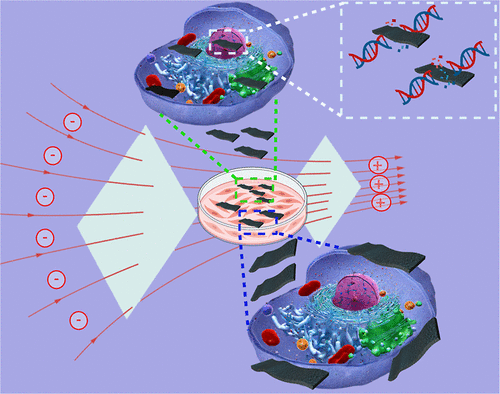Sergiy Kyrylenko, Inna Chorna, Zhanna Klishchova, Ilya Yanko, Anton Roshchupkin, Volodymyr Deineka, Kateryna Diedkova, Anastasia Konieva, Oksana Petrichenko, Irina Kube-Golovin, Gunther Wennemuth, Emerson Coy, Iryna Roslyk, Ivan Baginskiy, Veronika Zahorodna, Oleksiy Gogotsi, Benjamin Chacon, Luciana P. Cartarozzi, Alexandre L. R. Oliveira, Igor Iatsunskyi, Yury Gogotsi, and Maksym Pogorielov.
MXenes are among the most adaptable and extensively investigated two-dimensional materials, with potential applications spanning diverse scientific and technological domains, including the biomedical field. They are being actively studied for use in photothermal cancer therapy, drug delivery systems, biosensors, tissue regeneration, diagnostic imaging, blood purification, and antimicrobial coatings. Although MXenes have shown promising biocompatibility and minimal cytotoxicity, their genotoxic potential remains insufficiently characterized. To explore whether MXenes compromise DNA integrity in cultured cells, we exposed cells to MXene flakes and assessed chromosomal DNA damage using the comet assay technique.
Exposure to both Ti₃C₂Tₓ and Nb₄C₃Tₓ MXenes resulted in the formation of DNA comets, indicating genotoxic effects in murine melanoma and human fibroblast cells. However, no significant cytotoxicity was observed, suggesting that the MXenes were well tolerated by the cells. The size of the MXene flakes played a decisive role in this outcome—submicron-sized flakes caused DNA fragmentation, while larger flakes had no observable effect. Notably, DNA comets were absent in non-viable cells. Additional testing, including experiments with chromosomal DNA extracted from MXene-exposed cells or direct interaction between purified DNA and MXenes, did not show signs of DNA damage. Moreover, no DNA cleavage occurred in living cells containing MXenes when no electric field was applied.
These findings suggest that submicron MXene flakes are capable of penetrating live cells and inducing DNA fragmentation during electrophoresis, likely due to mechanical interaction driven by an electric field. This phenomenon appears to stem from the sharp-edged nature of the flakes and their motion within the cellular interior. In all other tested conditions, titanium- and niobium-carbide-based MXenes exhibited high biocompatibility and did not induce genotoxic or cytotoxic effects. These observations provide valuable insight into the safe biomedical application of MXenes, particularly in the context of targeted cancer treatment strategies.
